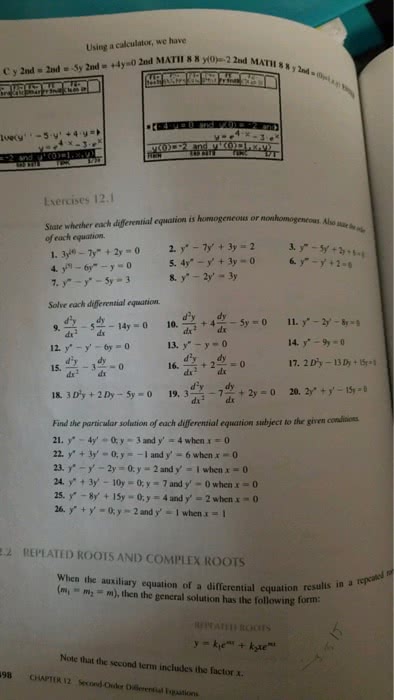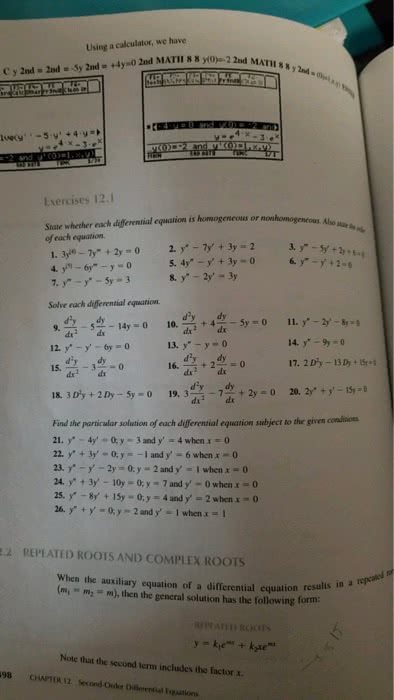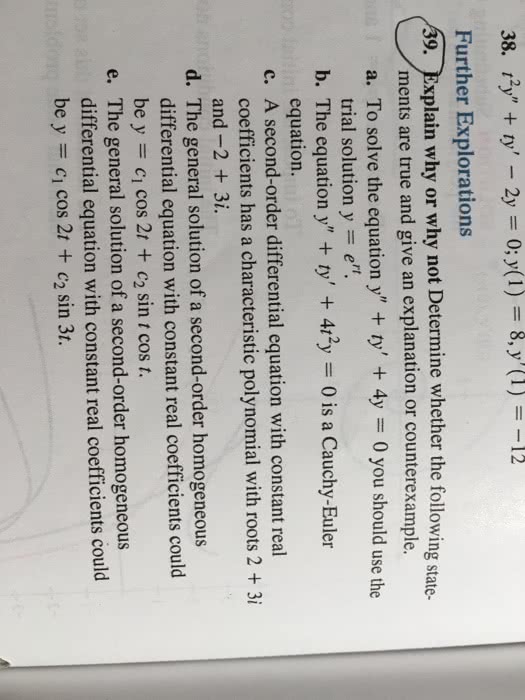Textbook Guide Mathematics: Electrical Network, Damping Ratio

99
MAT133Y1 Full Course Notes
Verified Note
99 documents
Document Summary
Forms: a second-order linear differential equation has the form, the form of a second-order linear homogeneous differential equation is. Solutions: (equation 2) is a solution of if is a root of the equation. This is called auxiliary equation (or characteristic equation). Second-order nonhomogeneous linear differential equations with constant coefficients has the form: are constants and g is a continuous function. (equation 1) where a, b and c. The related homogeneous equation (complementary equation) (equation 2) The method of variation of parameters: consider the differential equation, assume that y1(t) and y2(t) are a fundamental set of solutions for, then a particular solution to the nonhomogeneous differential equation is, Vibrating springs: function, thus the general solution is which can also be written as, this type of motion is called simple harmonic motion. Damped vibrations constant. where is a positive constant, called the damping. , then the applied frequency reinforces the natural frequency and the result is vibrations of large amplitude.



